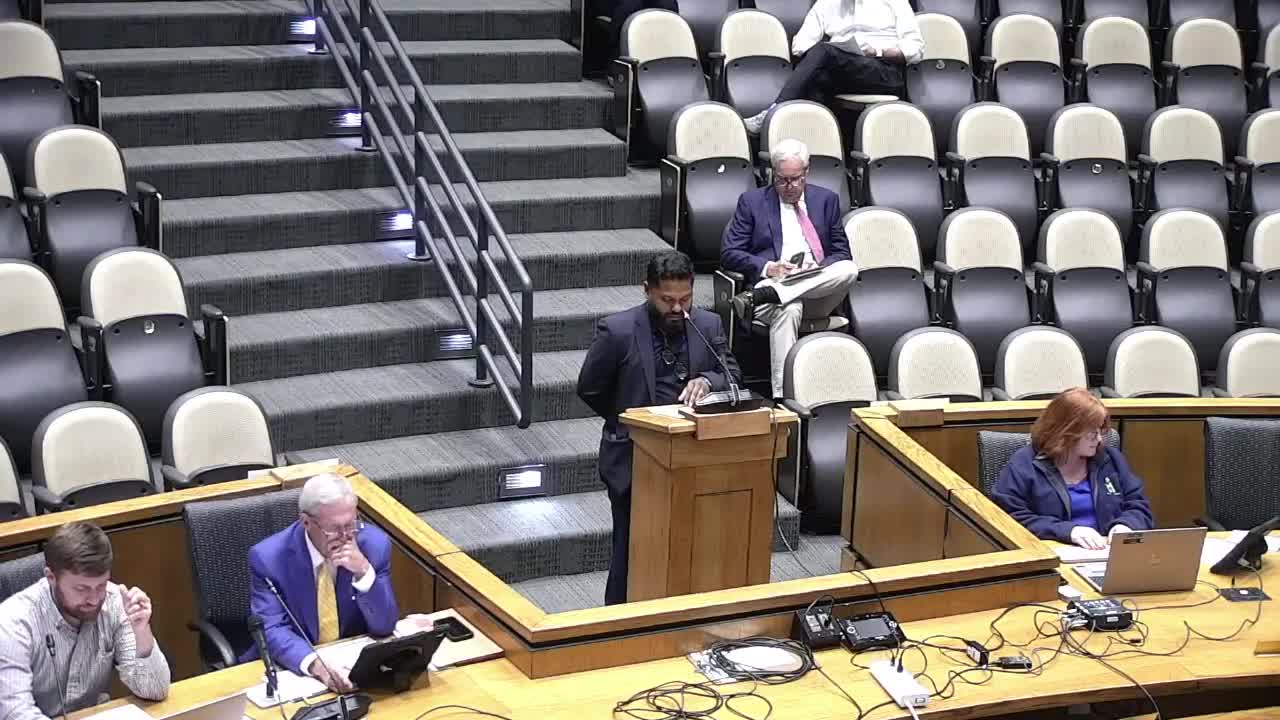Planning Commission Considers Cottage Hill Road Zoning Change From R1 To R3
September 19, 2025 | Mobile City, Mobile County, Alabama
This article was created by AI summarizing key points discussed. AI makes mistakes, so for full details and context, please refer to the video of the full meeting. Please report any errors so we can fix them. Report an error »

In the heart of Mobile, Alabama, the Planning Commission convened on September 18, 2025, to discuss a pivotal zoning application that could reshape a neighborhood along Cottage Hill Road. The atmosphere was charged with anticipation as commissioners deliberated the implications of a proposed rezoning from R-1, a residential suburban designation, to R-3, which allows for multifamily residential development.
At the center of the discussion was the applicant, Mr. Hussein, who proposed a development plan for 16 duplex units on a site of approximately three acres. The proposal raised concerns among commissioners about the potential for increased density if the rezoning were approved without restrictions. One commissioner highlighted that under R-3 zoning, the site could accommodate up to 75 units, a prospect that sparked a debate about the future character of the neighborhood.
As the conversation unfolded, the idea of imposing a voluntary density restriction emerged. This would limit the number of units to the initially proposed 16, ensuring that future developments would not exceed this cap without further review. Mr. Hussein expressed openness to this condition, indicating a willingness to work with the commission to address community concerns.
However, the dialogue also revealed differing opinions on the appropriateness of the R-3 designation. Some commissioners questioned whether R-2, which permits duplexes but limits overall density, might be a more suitable option. They argued that this would prevent the proliferation of higher-density developments in the area, preserving the neighborhood's character.
The commission's staff clarified that while R-3 would provide greater flexibility for future developments, it would also necessitate careful planning to avoid overwhelming the site with too many units. The discussion highlighted the delicate balance between encouraging development and maintaining the integrity of existing neighborhoods.
As the meeting drew to a close, the commissioners faced a crucial decision. Would they support the R-3 rezoning with a density restriction, or would they opt for the more conservative R-2 designation? The outcome of this meeting could set a precedent for future developments in Mobile, reflecting the ongoing tension between growth and community preservation. As the city continues to evolve, the decisions made in these meetings will shape the landscape for years to come.
At the center of the discussion was the applicant, Mr. Hussein, who proposed a development plan for 16 duplex units on a site of approximately three acres. The proposal raised concerns among commissioners about the potential for increased density if the rezoning were approved without restrictions. One commissioner highlighted that under R-3 zoning, the site could accommodate up to 75 units, a prospect that sparked a debate about the future character of the neighborhood.
As the conversation unfolded, the idea of imposing a voluntary density restriction emerged. This would limit the number of units to the initially proposed 16, ensuring that future developments would not exceed this cap without further review. Mr. Hussein expressed openness to this condition, indicating a willingness to work with the commission to address community concerns.
However, the dialogue also revealed differing opinions on the appropriateness of the R-3 designation. Some commissioners questioned whether R-2, which permits duplexes but limits overall density, might be a more suitable option. They argued that this would prevent the proliferation of higher-density developments in the area, preserving the neighborhood's character.
The commission's staff clarified that while R-3 would provide greater flexibility for future developments, it would also necessitate careful planning to avoid overwhelming the site with too many units. The discussion highlighted the delicate balance between encouraging development and maintaining the integrity of existing neighborhoods.
As the meeting drew to a close, the commissioners faced a crucial decision. Would they support the R-3 rezoning with a density restriction, or would they opt for the more conservative R-2 designation? The outcome of this meeting could set a precedent for future developments in Mobile, reflecting the ongoing tension between growth and community preservation. As the city continues to evolve, the decisions made in these meetings will shape the landscape for years to come.
View full meeting
This article is based on a recent meeting—watch the full video and explore the complete transcript for deeper insights into the discussion.
View full meeting
